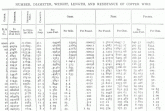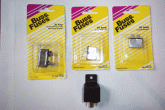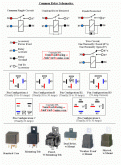JeepHammer
Solar Wizard
- Joined
- Nov 15, 2019
- Messages
- 1,149
This is something I did for vehicle wiring diagrams.
An Electrical Schematic is a very precise technical drawing of electrical circuits.
A Diagram, or Pictogram, shows representations of the components you will be using, and showing the wiring in between.
'CIRCUIT', BY DEFINITION, MAKES A 'LAP'.
A Direct Current (DC) Circuit Starts, and Ends at the same device (battery, charge controller, PV/wind/hydro, etc).
If that Circuit (Lap) is not completed, your Circuit is not complete and won't work.
A switch, relay, etc. 'Opens' the Circuit, stopping the Circuit from completing, giving you control of the devices.
A 'Closed' Circuit is a functioning device.
So when a switch is 'Off', that means the Circuit is 'Open',
When a switch is 'On', that means the Circuit is 'Closed', a closed 'Loop' or closed 'Circuit'.
While this is automotive related, it pretty common for all wiring diagrams/picrograms.




An Electrical Schematic is a very precise technical drawing of electrical circuits.
A Diagram, or Pictogram, shows representations of the components you will be using, and showing the wiring in between.
'CIRCUIT', BY DEFINITION, MAKES A 'LAP'.
A Direct Current (DC) Circuit Starts, and Ends at the same device (battery, charge controller, PV/wind/hydro, etc).
If that Circuit (Lap) is not completed, your Circuit is not complete and won't work.
A switch, relay, etc. 'Opens' the Circuit, stopping the Circuit from completing, giving you control of the devices.
A 'Closed' Circuit is a functioning device.
So when a switch is 'Off', that means the Circuit is 'Open',
When a switch is 'On', that means the Circuit is 'Closed', a closed 'Loop' or closed 'Circuit'.
While this is automotive related, it pretty common for all wiring diagrams/picrograms.




Last edited:








